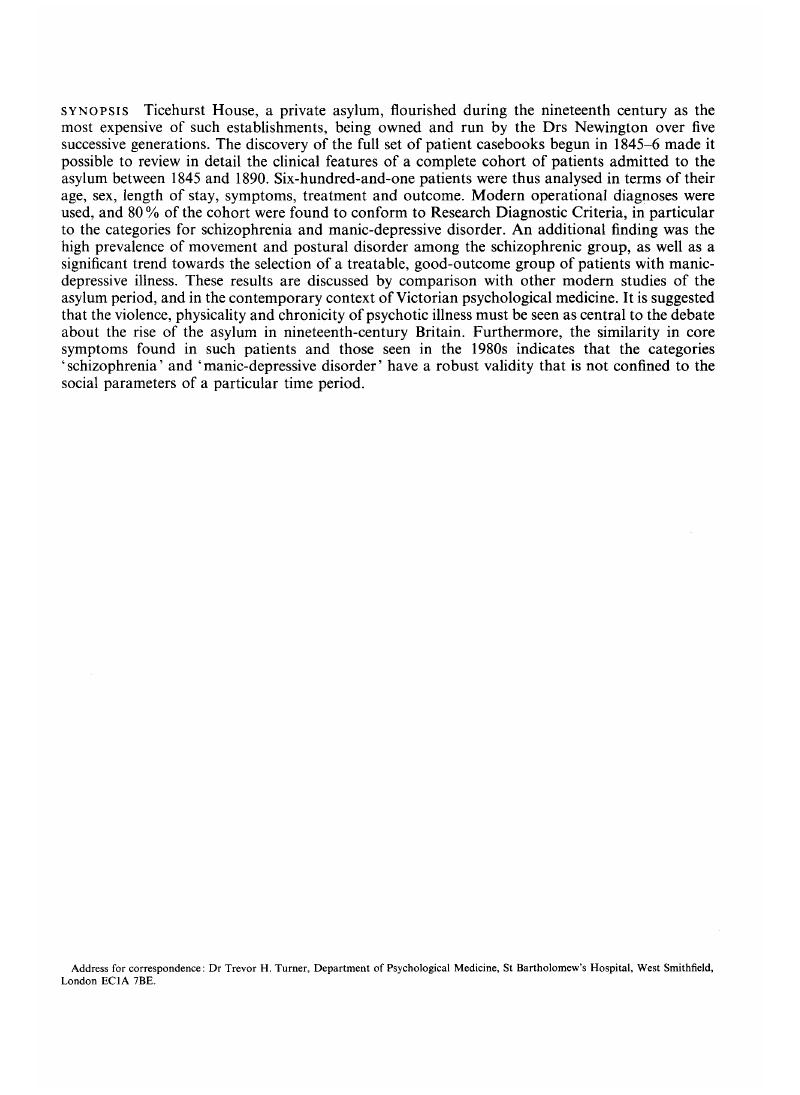Crossref Citations
This article has been cited by the following publications. This list is generated based on data provided by Crossref.
Yorston, Graeme
and
Shetty, Sharat
2000.
The correspondence of Archibald Campbell Clark: a 19th-century physician superintendent.
Psychiatric Bulletin,
Vol. 24,
Issue. 11,
p.
423.
Yorston, Graeme
and
Haw, Camilla
2005.
Old and mad in Victorian Oxford: a study of patients aged 60 and over admitted to the Warneford and Littlemore Asylums in the nineteenth century.
History of Psychiatry,
Vol. 16,
Issue. 4,
p.
395.
Turner, Trevor
2006.
Suicide now and then … an elusive comparison.
British Journal of Psychiatry,
Vol. 188,
Issue. 3,
p.
229.
Berkenkotter, Carol
and
Hanganu-Bresch, Cristina
2011.
Occult Genres and the Certification of Madness in a 19th-Century Lunatic Asylum.
Written Communication,
Vol. 28,
Issue. 2,
p.
220.
Ellis, Rob
2013.
Asylums and Sport: Participation, Isolation and the Role of Cricket in the Treatment of the Insane.
The International Journal of the History of Sport,
Vol. 30,
Issue. 1,
p.
83.
Kendler, K S
2016.
The transformation of American psychiatric nosology at the dawn of the twentieth century.
Molecular Psychiatry,
Vol. 21,
Issue. 2,
p.
152.
Newnes, Craig
2016.
Inscription, Diagnosis, Deception and the Mental Health Industry.
p.
45.
Beveridge, A
2018.
Sir Alexander Morison and The Physiognomy of Mental Diseases: Part 1.
Journal of the Royal College of Physicians of Edinburgh,
Vol. 48,
Issue. 3,
p.
272.
Beveridge, A
2018.
Sir Alexander Morison and The Physiognomy of Mental Diseases: Part 2.
Journal of the Royal College of Physicians of Edinburgh,
Vol. 48,
Issue. 4,
p.
352.
Gutiérrez, Emilio
and
Carrera, Olaia
2020.
Weight Management.
Rehling, Joseph
and
Moncrieff, Joanna
2021.
The functions of an asylum: an analysis of male and female admissions to Essex County Asylum in 1904.
Psychological Medicine,
Vol. 51,
Issue. 7,
p.
1140.
McPherson, Susan
and
Armstrong, David
2022.
Psychometric origins of depression.
History of the Human Sciences,
Vol. 35,
Issue. 3-4,
p.
127.
Gutierrez, Emilio
García, Naomi
and
Carrera, Olaia
2024.
Disordered eating in anorexia nervosa: give me heat, not just food.
Frontiers in Public Health,
Vol. 12,
Issue. ,



